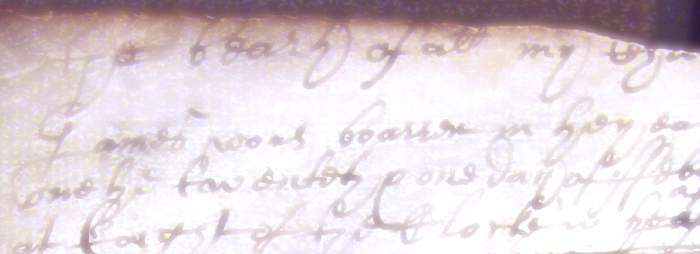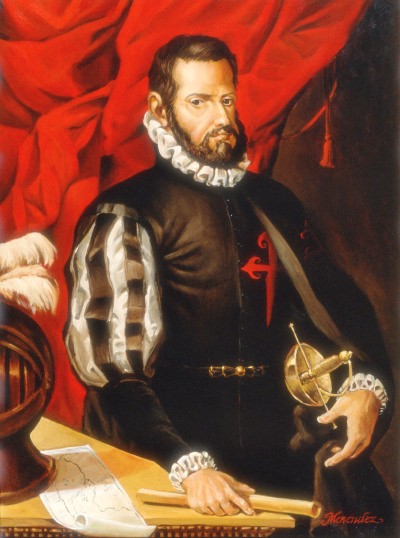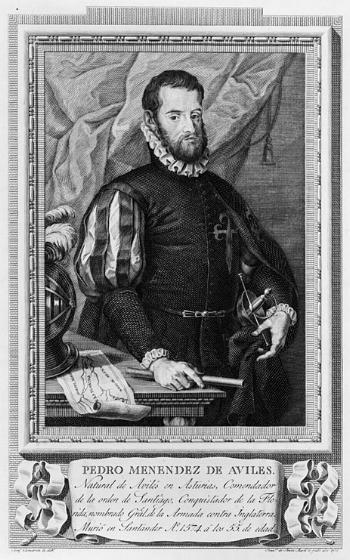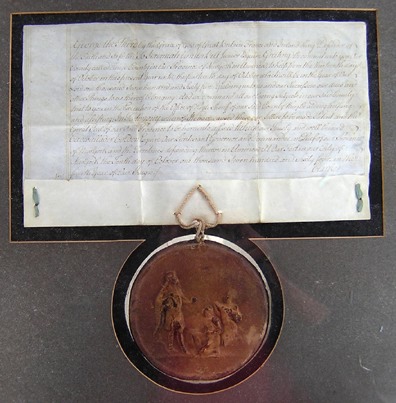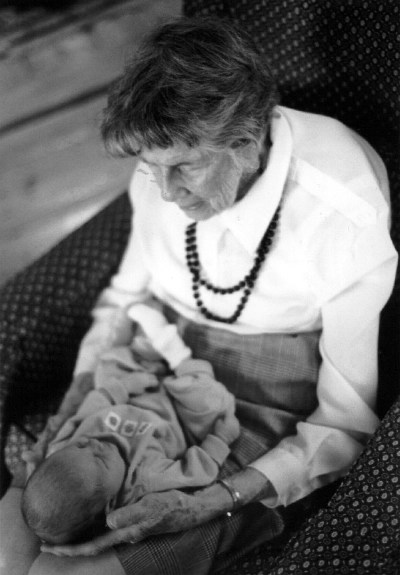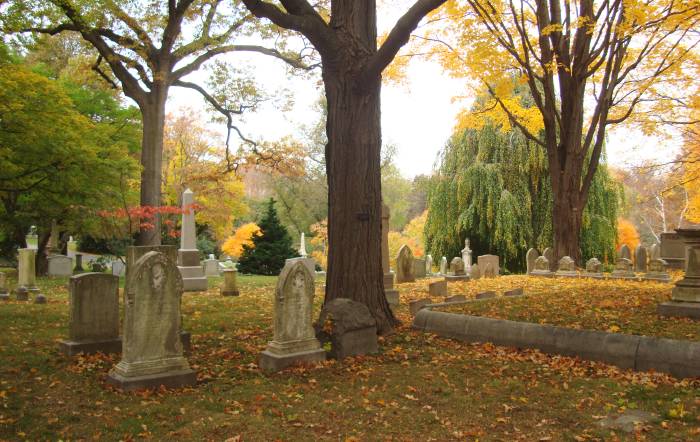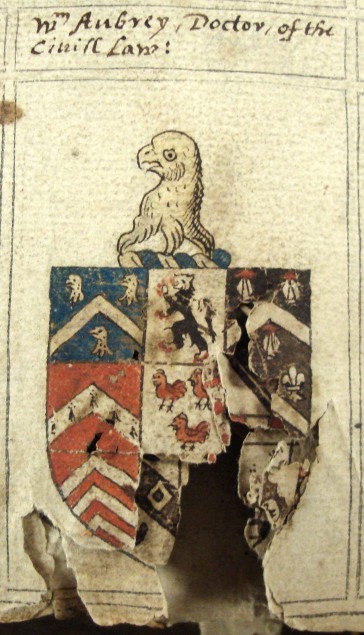Monday, December 15, 2008
Heavy, thick and dark, this book. It’s actually four books in one: a Book of Common Prayer, a (Geneva) Bible, a Concordance, and paraphrases of the Psalms. All printed in London, 1599 and 1600. A typical omnibus for devout and plain, but respectable if not substantial folk: a quarto, period bound in blind-stamped leather, much repaired. Whisked out for me in the reading room of the Houghton Library.
Samuel Andrews, a draper, of London, and his wife Jane, came to New England in 1634, and settled at Saco, Maine, with their children. After Samuel’s death Jane married Arthur Mackworth of Saco and Falmouth, and had two more daughters with him. The bible records the first four of Jane and Samuel’s children, born in London before their emigration. (Continued)
Saturday, December 13, 2008
For years I only knew him as a correspondent of my mother’s cousin Dick Brownell. After cousin Dick had visited the old Brownell home-place at Stackallan, County Meath, Ireland, in the 1980s, he corresponded with far-flung members of the Brownell family in Ireland, England, Canada, and South Africa. Long ago Dick showed me (and I carefully copied) enormous, intricate charts of the Brownells compiled by a South African member of the family, Fred Brownell. Only years later did I realize that distant cousin Fred was also chief of the Bureau of Heraldry for the Republic of South Africa, and the man who designed the current South African national flag. I sought to contact him once a few years ago (via the Bureau) but learned he had recently retired and didn’t pursue it further. However, when I was at the International Congress of Genealogical and Heraldic Sciences at Québec this past June, I found some South African heralds chatting in the hallway and asked one of them whether there was some way I could get in touch with my cousin Frederick Brownell. He smiled, and graciously led me a few steps—to Fred!
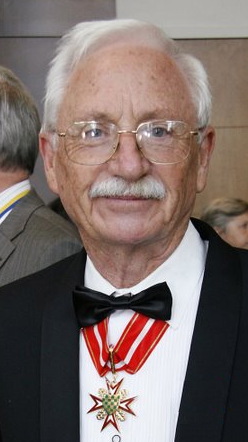
It was a pleasurable and completely unexpected meeting. (Continued)
Friday, November 21, 2008
Tipped into the copy of Charles Knowles Bolton’s Bolton’s American Armory in the reading room of the Rhode Island Historical Society Library is a photocopy of an excerpt from a letter by Horold Bowditch, longtime chair of the Committee on Heraldry of the New England Historic Genealogical Society; it amounts to a review of the book but is decidedly personal and not for publication. The person who typed the excerpt did not state to whom the letter was written, but it is dated 1947—20 years after the Armory came out. Here it is:
Abstracted from a letter written by Harold Bowditch in 1947.
Bolton’s American Armory, 1927. … Bolton was for many years the librarian of the Boston Athenaeum, a very old private library. He had a genius for writing books on many subjects which gave him a reputation among those who did not see very deeply into them; his trouble was that he was too many-sided and too superficial and hurried. As to heraldry, he may be almost said to be an ignoramus; (Continued)
Friday, November 14, 2008
Sooner or later a genealogy blog is going to reference Mormonism, however tangentially.
My daughter’s third grade class has paired with a class in the Southwest; each pupil has a penpal in the other class. They have been trading letters filled with short, declarative sentences alternated with personal queries.
My daughter’s penpal:
“ … Do you have any books? I have a Book of Mormon. …”
Only after my daughter had written her reply did she ask me about it. “What are Mormon books?”
(Continued)
Thursday, November 13, 2008
I’ve been reading some of the works of the Appleton era, when the Committee on Heraldry of the New England Historic Genealogical Society kept a conservative eye on New Englanders with proved rights to English arms, and cast a jaundiced and disapproving eye on everyone else who affected arms. Before the Committee began in earnest to publish its Roll of Arms in the 1920s, the only such published list which pretended to (or which attained) scholarly rigor was that by William Sumner Appleton himself, “Positive Pedigrees and Authorized Arms of New England,” New England Historical and Genealogical Register 45 (1891), 187-90; and 52 (1898), 185, which I have linked here as a 196K pdf file. Appleton’s list of 32 immigrants “whose ancestors are recorded in the heraldic visitations of England and whose descendants are probably living in the United States of America,” is precisely the list of 32 immigrants reproduced by George W. Chamberlain as “Armorial Families of New England,” Magazine of History with Notes and Queries 6 (Jul-Dec 1907), 285-90; 8 (July-Dec 1908), 22-28, 101-107, 168-76, which I have linked here as a 644K pdf. To be fair, Chamberlain’s list gives more genealogical detail on the families of these 32 colonists. He further notes Appleton’s pessimistic view that, in addition to the thirty-two armigers already proved, “a dozen more names was a limit not likely to be exceeded.” The Roll of Arms no longer consists wholly of New Englanders nor of colonists with English origin and arms, but it now numbers well over 800, of which 713 arms have been published (among which some couple dozen entries belonged to Americans with modern honorary grants, a practice now discontinued).
Tuesday, November 11, 2008
[UPDATED: better, credited photo of the modern painting of Don Pedro.]
We New Englanders, and Anglos generally, have neglected the other colonies in our search for armigerous early settlers in the colonies that would become the United States. (This is the mandate behind the Roll of Arms compiled by the Committee on Heraldry of the NEHGS.) In over a hundred years of active compilation of the Roll (now with over 800 arms in it), the early colonists of Florida, Louisiana, and California (or other parts of Nueva España or Nouvelle France) have been entirely overlooked—at least the Dutch settlers of Nieuw Amsterdam have been represented to a degree.
Casting about in early Florida gets us to the Almirante Pedro Menéndez de Avilés (1519-1574), first colonial governor, founder of Saint Augustine.
One remarkable thing is that his own coat of arms survives, painted on a panel from his original coffin:
(Continued)
Some years ago Chico Doria, a Brazilian mathematician and genealogist, wrote “One of my distant 15th-century ancestors was a canon who used to fool around with Angela Mendes, ‘a bonitinha,’ The Pretty One. I’m fascinated by her; I sometimes try to find out her face in the faces that I see in the streets.”
Chico’s words are humanistic genealogy at its best. After all, the subject of our interest is people. We cannot and should not prefer those we find only on paper (or on parchment, or in stone) to those inhabiting this world with us now, all of whose blood we share. Some genealogists do not seem particularly interested in, or particularly good at dealing with, living people. But the connections between the living and the dead are far stronger and more complex than we realize.
Search the faces. She is there.
Tuesday, November 4, 2008
Too many Jeremiahs! Since writing about Natalie’s people, my New York great-aunt’s ancestry, I have been drawn into her Vanderbilt connection. Her great-grandfather, Thomas Atwater Jerome, was an uncle of the famous Jennie Jerome, Churchill’s mother. Jerome’s wife was Emma Vanderbilt, and I had thought that with such a famous person in it—the Commodore—this family would surely be all well documented in some ‘Vanderbilt genealogy’ available on google books or ancestry.com. Unfortunately not!
From a database of death notices from the New York Evening Post (online at the NEHGS website, newenglandancestors.org) I found that Emma Vanderbilt’s mother was Hannah, widow of a Jeremiah Vanderbilt; Hannah died in 1865 leaving sons-in-law J. R. Lott and T. A. Jerome. On the ‘Vanderbilt’ message board on genealogy.com I found a descendant of the Lott son-in-law who has similarly searched for Jeremiah Vanderbilt. As it turns out, this Lott descendant has an heirloom which provides a clue to the mystery: a very fine letter of commission, from the New York provincial governor in the name of King George III, appointing an obviously earlier Jeremiah Vanderbilt ‘Jr.’ as High Sheriff of King’s County (Long Island), for the year 1764-1765.
From this Lott descendant we learn that his ancestor James Lott’s wife was named Harriet (no pillar of salt jokes please); (Continued)
Today, almost eight years later, I finally visited Carolyn. My wife’s grandmother Carolyn Harmon Scott, née Carolyn Ayer Harmon, died in the year our oldest daughter was born, so she lived to see her first great-grandchild. Their first visit was when Cassandra was four days old—
— but within a year, as Carolyn was at the end of her life, Cassandra got to play among the oxygen tubing that ran about her bed. Carolyn died 27 December 2000, while we were living in Kentucky. Mount Auburn Cemetery is lovely, and it did not take long to find my way to the Nye – Scott plot, somewhere between Mary Baker Eddy and Oliver Wendell Holmes. The small, unassuming plot dates from 1859 when David Charles Nye bought it to bury his own son, Carolyn’s husband’s great-grandfather Charles Ruggles Nye (1831-59). The oldest marble stone, probably erected to the son Charles Ruggles Nye, is now illegible but a closely matching one still legibly marks David C. Nye himself, who died in 1870.
(Continued)
Saturday, November 1, 2008
Yesterday, in the R. Stanton Avery Manuscript Collection of the New England Historic Genealogical Society (NEHGS) in Boston, I had the chance to look at (and, with the acquiescence of Timothy Salls, the manuscript curator, take a couple of photographs of) the Promptuarium armorum, a heraldic miscellany by William Smith, Rouge Dragon Poursuivant in the College of Arms from 1597 to 1618.
This manuscript’s title page says it was begun in 1602. It has long been known in New England heraldic circles; it belonged to John Gore and Samuel Gore, two heraldic and decorative painters, father and son, who created the ‘Gore Roll’ in the early or mid 18th century. The signatures of the Gores on the Promptuarium give it a strong provenance (though substantial gaps remain). It was in New England at least by the early 18th century, and in this regard is an important colonial document even though it is a book of English arms by an English herald.
I wonder whether anyone (at least here in New England) had previously noticed that the Promptuarium exists in two copies; the other is British Library MS Harley 5807. My purpose in visiting was to get some information about the Promptuarium with which to compare the Boston manuscript with that in London. (Continued)
